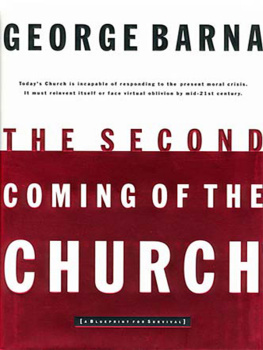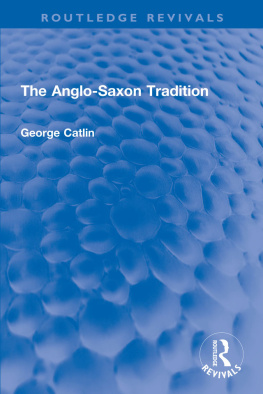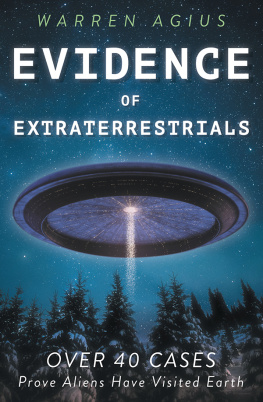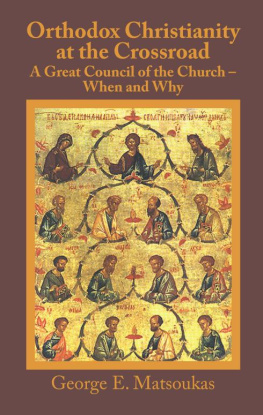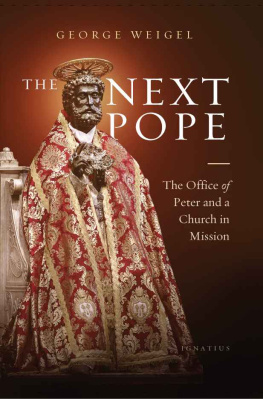George Agius - Tradition And The Church
Here you can read online George Agius - Tradition And The Church full text of the book (entire story) in english for free. Download pdf and epub, get meaning, cover and reviews about this ebook. year: 2016, publisher: TAN Books, genre: Religion. Description of the work, (preface) as well as reviews are available. Best literature library LitArk.com created for fans of good reading and offers a wide selection of genres:
Romance novel
Science fiction
Adventure
Detective
Science
History
Home and family
Prose
Art
Politics
Computer
Non-fiction
Religion
Business
Children
Humor
Choose a favorite category and find really read worthwhile books. Enjoy immersion in the world of imagination, feel the emotions of the characters or learn something new for yourself, make an fascinating discovery.

- Book:Tradition And The Church
- Author:
- Publisher:TAN Books
- Genre:
- Year:2016
- Rating:5 / 5
- Favourites:Add to favourites
- Your mark:
- 100
- 1
- 2
- 3
- 4
- 5
Tradition And The Church: summary, description and annotation
We offer to read an annotation, description, summary or preface (depends on what the author of the book "Tradition And The Church" wrote himself). If you haven't found the necessary information about the book — write in the comments, we will try to find it.
Tradition And The Church — read online for free the complete book (whole text) full work
Below is the text of the book, divided by pages. System saving the place of the last page read, allows you to conveniently read the book "Tradition And The Church" online for free, without having to search again every time where you left off. Put a bookmark, and you can go to the page where you finished reading at any time.
Font size:
Interval:
Bookmark:
TRADITION
AND
THE CHURCH
By
Msgr. George Agius, D.D., J.C.D
| Nihil Obstat: | Rev. Paul Waldron Censor | |
| Imprimatur: |  | Francis J. Beckman, D.D. Bishop of Lincoln March 28, 1928 |
Copyright 1928 by The Stratford Company, Boston. Re-typeset and republished, with minor revisions (primarily punctuation) for clarity, by TAN Books and Publishers, Inc., in 2005. Revisions copyright 2005 by Thomas A. Nelson.
ISBN 0-89555-821-1
Cover image of a statue of St. Peter seated and holding the Keys typical of similar statues placed at the front of the Catholic cathedral church buildings: By arrangement with www.AgnusImages.com.
TAN Books
Charlotte, North Carolina
www.TANBooks.com
2005
"Faith then cometh by hearing; and hearing by the word of Christ."
Romans 10:17
"But there are also many other things which Jesus did; which, if they were written every one, the world itself, I think, would not be able to contain the books that should be written."
John 21:25
"Therefore, brethren, stand fast; and hold the traditions which you have learned, whether by word, or by our epistle."
2 Thessalonians 2:14
Foreword
To the Second Edition
M ONSIGNOR George Agius was born on January 10, 1873 on the island of Gozoa 40-square mile island with 30,000 inhabitants in the central Mediterranean Sea about three and one-half miles off shore to the northwest of the island of Malta. He studied at the Jesuit Seminary on Gozo and was ordained in 1895 by Bishop Camilleri for that diocese. In 1897, he entered the Gregorian University in Rome and by 1901, Father Agius had earned two doctoratesone in Theology and the other in Canon Law.
One of his classmates at the Gregorian University was Father Eugenio Pacelli, who later became Pope Pius XII (1938-1958). Fr. Agius observed, "While I was a student at the Pontifical University, I never thought I was sitting on the same bench with a future successor to Saint Peter." Shortly after Father Agius completed his doctoral studies in Canon Law, he received a letter from Bishop Thomas A. Bonacum, the first bishop of Lincoln, Nebraska, offering him the position of secretary and chancellor for the Diocese of Lincoln. Having accepted this offer, Fr. George Agius arrived in Lincoln in September of 1902 and immediately assumed his duties as Secretary and Chancellor for the Diocese.
Father Agius continued to serve as Secretary and Chancellor for the Diocese of Lincoln for ten years. In addition to his administrative responsibilities, he had several pastoral responsibilities which included, among others, the assignment by Bishop J. Henry Tihen as resident pastor in Seward, which is the town in which the modern-day seminary, St. Gregory the Great, is located. After being pastor at Seward, Fr. Agius was transferred to Geneva, Nebraska in 1916, where he was able to devote time to study and research, in addition to caring for the spiritual needs of his parishioners. The purpose of his study was to define and then help meet some of the challenges that confronted the Church in the 1920's. He observed that the authority of the Church was being rejected, some of her doctrines were being "thrown to the wind," and some people were denying the divinity of Christ. It was during this time that Fr. Agius wrote Tradition and the Church, which was originally published in 1928. Testimonies on the depth of thinking demonstrated in this book were numerous. These praises came from the hierarchy, as well as from editors of newspapers and periodicals. Bishop Beckman wrote: "Dr. Agius takes a place alongside other leaders in the realm of Catholic thought and joins them in the noble effort of presenting the claims of the Catholic Church to a generation that can be saved by nothing else."
After serving for more than 18 years in the Diocese of Lincoln, Father Agius decided to seek permanent status as a priest of that diocese. Accordingly, he requested his exeat (official release) from his native Diocese of Gozo and was incardinated into the Diocese of Lincoln in 1921. In 1937, Fr. Agius was given the title of Monsignor. He was later the official representative of the Lincoln Diocese at the proclamation of the dogma of the Assumption of the Blessed Virgin Mary on November 1, 1950.
As a former classmate of Pope Pius XII, he enjoyed the privilege of a special place near the throne of the Holy Father. After serving as a priest for 67 years, Msgr. Agius died on March 6, 1962 and was buried on the island of Malta, in the same year which saw the beginning of Vatican Council II.
This book is one of the best texts written in English on Tradition, even though originally it did not enjoy a large circulation. It is understandable to the average layman, yet it provides a solid historical and doctrinal coverage of the basics of the theology of Tradition. The publishing of this book by TAN comes at an important time in the life of the Church when many are seeking a greater understanding of the entire subject of the Catholic Church. Those seeking a basic understanding of the Tradition of the Churchunencumbered by the influences of Modernismwould be well served to read this book. It is, therefore, my hope that Tradition and the Church will become widely circulated and known everywhere by the Faithful.
Fr. Chad A. Ripperger, F.S.S.P., Ph.D.
Our Lady of Guadalupe Seminary
Denton, NebraskaSeptember 3, 2005
Publisher's Preface
About This Book
C ATHOLICS have all heard that the sources of our Faith are Scripture and Tradition. It is pretty easy to know what Scripture is, but Tradition is another story. Most Catholics have had only a vague idea of what Catholic Tradition really means and exactly what all is included in this concept. Tradition and the Church, however, will cure this problem, answering most of the questions that might arise regarding the nature of Catholic Tradition and how it works on a practical level. Before reading this book, most readers might think Tradition is a completely oral transmission of those truths we hold which are not specifically included in the Bible. This is partly true, but there is a whole lot more involved.
In this book, Msgr. George Agius has centered his discussion largely around what the Fathers of the Church have written about the faith of the Catholic Church in the early centuries of Christianity. Their writings, compiled into one edition, amount to a very large encyclopedia-sized set of volumesperhaps somewhat larger than the biggest set of encyclopedia books in print today. And yet the Fathers of the Church have not recorded in writing every aspect and phase of Catholic faith. What they have recorded, however, is of inestimable value to the Church and to posterity, for they wrote against the early adversaries of the Catholic Church, starting already in the First Century. When problems or disputes arose as to what is proper Christian teaching on any given point, various eminent Catholic writers would refute these errors with their writings. Those men have come to be known as the Fathers of the Church, and their written testimony is invaluable because they witness to the exact teaching of the Catholic Church right from its earliest beginning and on down into the Fifth and Sixth Centuries. These writings are still referred to by the present-day Church authoritiesfor example, when it comes time for the Pope to make a solemn definition of doctrine or for an ecumenical Church council to settle a disputed question. In other words, there is a large body of
Next pageFont size:
Interval:
Bookmark:
Similar books «Tradition And The Church»
Look at similar books to Tradition And The Church. We have selected literature similar in name and meaning in the hope of providing readers with more options to find new, interesting, not yet read works.
Discussion, reviews of the book Tradition And The Church and just readers' own opinions. Leave your comments, write what you think about the work, its meaning or the main characters. Specify what exactly you liked and what you didn't like, and why you think so.

